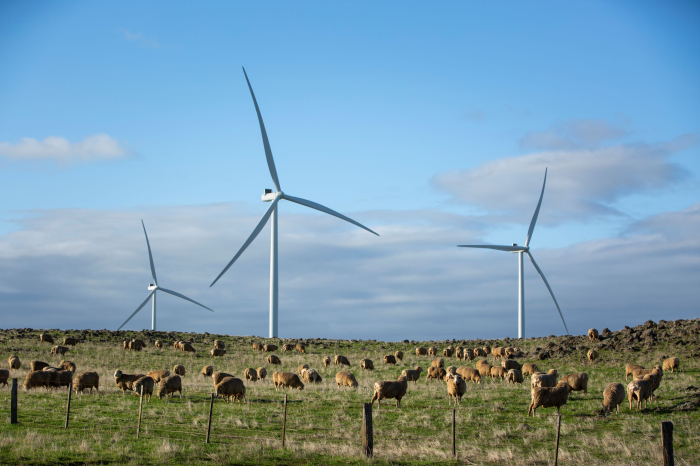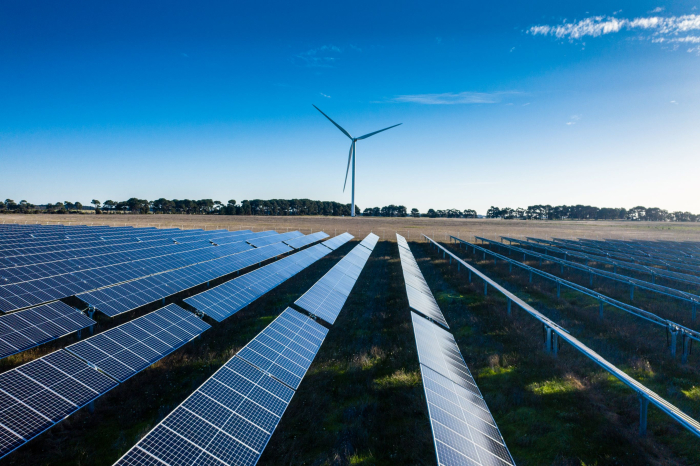Unlocking value in the Australian energy transition: QIC
Australia’s compelling fundamentals and investible opportunities offer a once-in-a-generation possibility, says Kirsten Whitehead
May 24, 2024 (Gmt+09:00)
long read
Most Read
Samsung steps up AR race with advanced microdisplay for smart glasses


When in S. Korea, it’s a ritual: Foreigners make stops at CU, GS25, 7-Eleven


Maybe Happy Ending: A robot love story that rewrote Broadway playbook


NPS yet to schedule external manager selection; PE firms’ fundraising woes deepen


US auto parts tariffs take effect; Korea avoids heavy hit



Australia is primed to stand at the forefront of the global energy transition, boasting abundant solar and wind capacity, alongside substantial reserves of critical minerals essential for achieving net zero carbon emissions. While this landscape is ripe for investment, it is how investors unlock value that will prove to be critical.
Kirsten Whitehead, a partner in the infrastructure division of Australian institutional fund manager QIC, said Australia has a compelling set of fundamentals and investible opportunities, particularly in the energy transition sector.
"Australia is highly regarded for its competitiveness, transparency, resource endowment, skilled workforce, and strategic location. In today’s world, its geopolitical stability and security also can’t be understated," said Whitehead.
While government initiatives have propelled infrastructure growth, private capital remains pivotal in steering towards a resilient net zero future. Ms Whitehead added that investing in Australia’s energy transition provides investors a once-in-a-generation opportunity.

AUSTRALIA’S ENERGY TRANSITION OPPORTUNITY
In Australia alone, $1.9 trillion of investment is required to reach net zero by 2050, equivalent to flows of $68 billion of capital annually. This figure includes an estimated investment of $400 billion for low-carbon power, $300 billion in the grid, doubling the length of the network to over 1.6 million kilometers from 2022 to 2050, and $1 trillion in electric vehicles, according to Bloomberg New Energy Finance data.
“Notably, the energy transition is spurring investment not just on the supply side moving away from fossil fuels to low-carbon sources of energy, but also towards the demand side into electrified transport and clean shipping,” said Whitehead.
Australia’s Federal Government is supporting the transition and is firming up Australia’s position as a "renewable energy superpower" through a range of policies including its recently announced Future Made in Australia plan. This A$22.7 billion ($15 billion) policy is a key announcement that will maximize the economic and industrial benefits of the energy transition and build upon previous initiatives to chart a robust path toward net zero.
Other notable policies and reforms include the Powering Australia Plan with an A$24.9 billion commitment to achieve a 43% reduction in emissions by 2030; Capacity Investment Scheme that supports 32 gigawatt (GW) renewable energy by 2030; Rewiring the Nation, an A$20 billion investment to modernize the electricity grid alongside state government investments; and Safeguard Mechanism Reform that requires large emitters to reduce emissions by 4.9%, announced by the Australian government.
GEOPOLITICAL STABILITY
However, as the world enters an era of deglobalization coupled with uncertainty and conflict, the need for resilience will be essential for thriving economies, assets, and investment portfolios.
“Resilience is not solely the ability to resist shocks, but also the capacity to rebound from systematic and idiosyncratic risks,” said Whitehead.
Underpinning Australia’s security and stability is the region’s role in key defense and trade pacts. Australia and New Zealand’s security relationships include North Atlantic Treaty Organization (NATO), Australia, New Zealand and the United States of America (ANZUS), The Five Eyes Intelligence community, the Quadrilateral Security Dialogue, Australia-UK-US trilateral security partnership AUKUS and the Five Power Defence Arrangements.

RICH IN CRITICAL MINERALS
Australia also offers a competitive advantage in the natural resources needed for the energy transition. Over the years, Australia has economically prospered through its resource endowment. The region’s wealth of natural resources provides a competitive advantage and point of differentiation compared to other global regions for investment.
The country is one of the world’s leading producers of commodities such as aluminum ore, iron ore, gold and lead and is a net energy exporter.
Australia is also a leading producer of critical minerals that are key inputs for the energy transition. The region contributes lithium, nickel, zinc, copper, rare earth and other materials critical to producing electric vehicles, batteries, solar panels and wind turbines.
These commodities, coupled with an abundance of solar and wind resources in the region, are important to ensuring a decarbonized future through the provision of renewable energy and low-emissions exports.
Australia has 18 free trade agreements which alleviate the barriers for goods, services and investment to flow internationally.
“Australia has become a reliable partner for the supply of bulk commodities and is a China Plus One supplier of critical minerals and certain technologies,” Whitehead explained.
WHY AUSTRALIAN INFRASTRUCTURE?
Australia has been a global leader in private infrastructure investment for over 40 years resulting in a sophisticated and mature market and remains an important long-term destination for capital and a key diversifier for a global portfolio.
Whitehead said private capital continues to seek and generate attractive risk-adjusted returns from Australian and New Zealand infrastructure. Like many regions, governments are capital-constrained yet committed to net zero targets and other policy initiatives. To achieve these goals, support a significant pipeline of infrastructure projects, and reduce the funding gap, the role of private capital will become increasingly critical.
“Australia is early in its decarbonization journey and a significant opportunity exists over the coming decades to invest in energy transition infrastructure. As the world decarbonizes, Australia is well positioned through ample land, wind, and sun to support renewable development,” Whitehead said.
“Political momentum at both the Federal and State Government levels looks to accelerate Australia’s decarbonization pathway. In addition, large corporates and mining companies are setting emission reduction targets, driving demand for renewable energy generation and storage as well as renewable enabling infrastructure such as firming capacity and smart meters,” she added.

QIC’S VALUE CREATION
“As thematic sector-centric investors at QIC, we delve deeper and uncover where the true value exists in assets, as knowing where to look is only part of the story. Applying an active investment approach to managing these assets is critical to delivering value to investors.
The changing landscape and evolving opportunity set underscores the importance of local insights, deep relationships and experience with stakeholders. These factors are critical enablers for active investors to deliver value and effectively manage risk.,” Whitehead said.
She added that infrastructure assets are becoming more complex in today’s world, with three key areas of focus to deliver operational value creation.
“We think about organization, optimization and orientation - the ability to build scale; the ability to add value via strategy; and executive capability,” she noted.
QIC now manages A$33.9 billion globally, with an expansive footprint across the Australian and New Zealand markets. Specifically, the team in Australia is 70 strong with 49 Non-Executive Directors and Advisors and investments in energy transition platforms including Tilt Renewables, Pacific Energy and Bluecurrent.
“In Australia, we have been investing in the energy transition thematic now for over a decade having built multiple platforms. In this region alone we currently manage A$7 billion in assets across the energy value chain and remain very committed to and excited by the investment opportunities in energy transition that lay ahead.
QIC is a long-term specialist manager in alternatives offering infrastructure, real estate, private capital, private debt, natural capital, liquid strategies and multi-asset investments. It is one of the largest institutional investment managers in Australia, with A$111 billion in funds under management as of March 31, 2024.
QIC has over 900 employees and serves approximately 115 clients. Headquartered in Brisbane, Australia, QIC also has offices in Sydney, Melbourne, New York, San Francisco and London.

Whitehead has over 20 years’ experience in the field of corporate finance, funds and investment management and legal, with specialist skills in infrastructure, asset management and capital raising. She holds a bachelor of commerce and bachelor of law (Hons) from the University of Queensland and a graduate diploma of legal practice from the College of Law, New South Wales.
Jennifer Nicholson-Breen edited this article.
More to Read
-

-
 Pension fundsNPS yet to schedule external manager selection; PE firms’ fundraising woes deepen
Pension fundsNPS yet to schedule external manager selection; PE firms’ fundraising woes deepenMay 02, 2025 (Gmt+09:00)
-
 Real estateMirae Asset to be named Korea Post’s core real estate fund operator
Real estateMirae Asset to be named Korea Post’s core real estate fund operatorApr 29, 2025 (Gmt+09:00)
-
 Asset managementMirae Asset bets on China as Korean investors’ US focus draws concern
Asset managementMirae Asset bets on China as Korean investors’ US focus draws concernApr 27, 2025 (Gmt+09:00)
-
 Alternative investmentsMeritz backs half of ex-manager’s $210 mn hedge fund
Alternative investmentsMeritz backs half of ex-manager’s $210 mn hedge fundApr 23, 2025 (Gmt+09:00)
Comment 0
LOG IN


